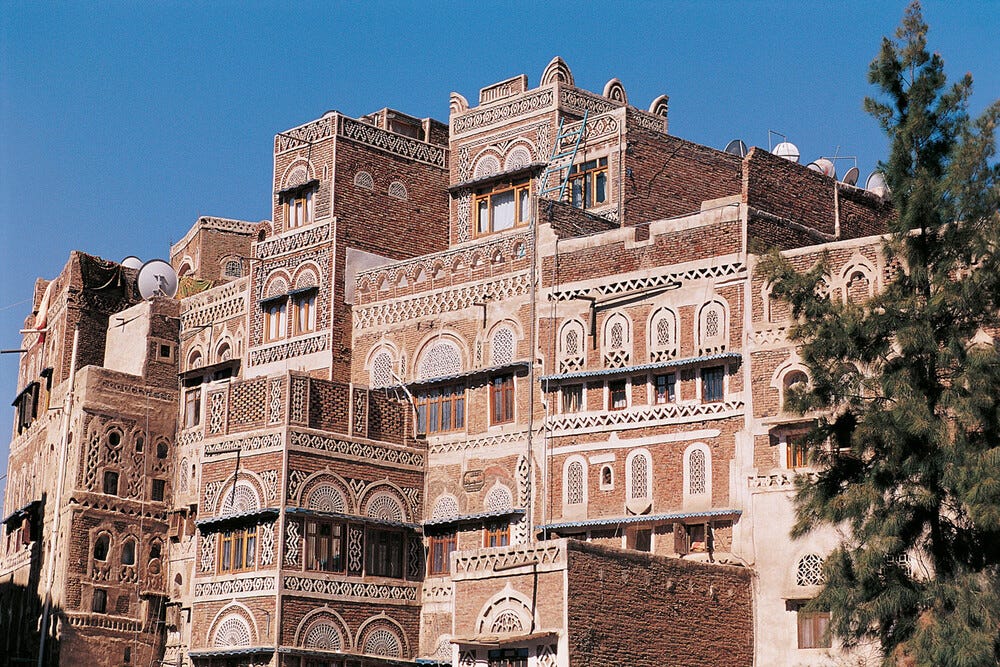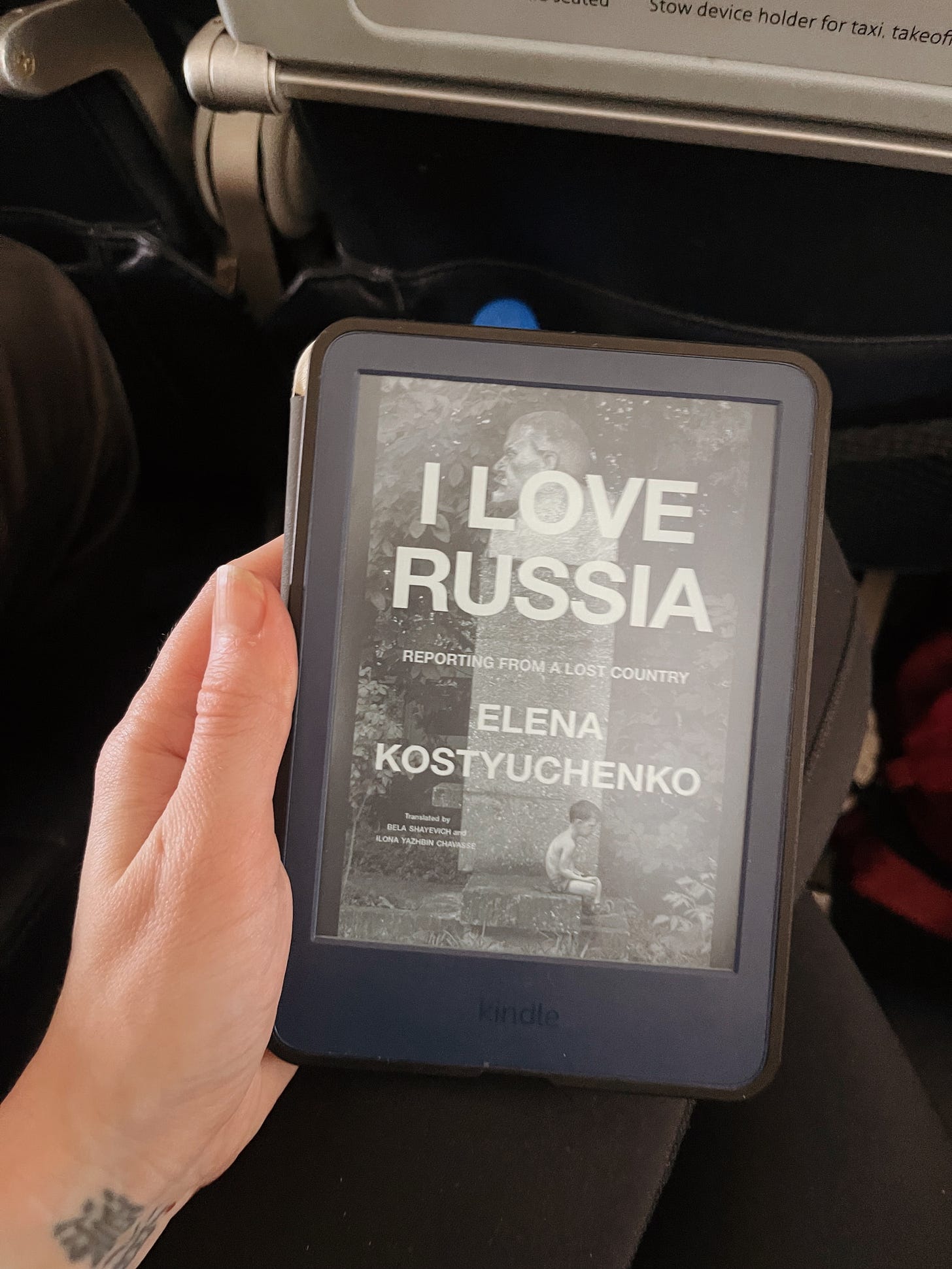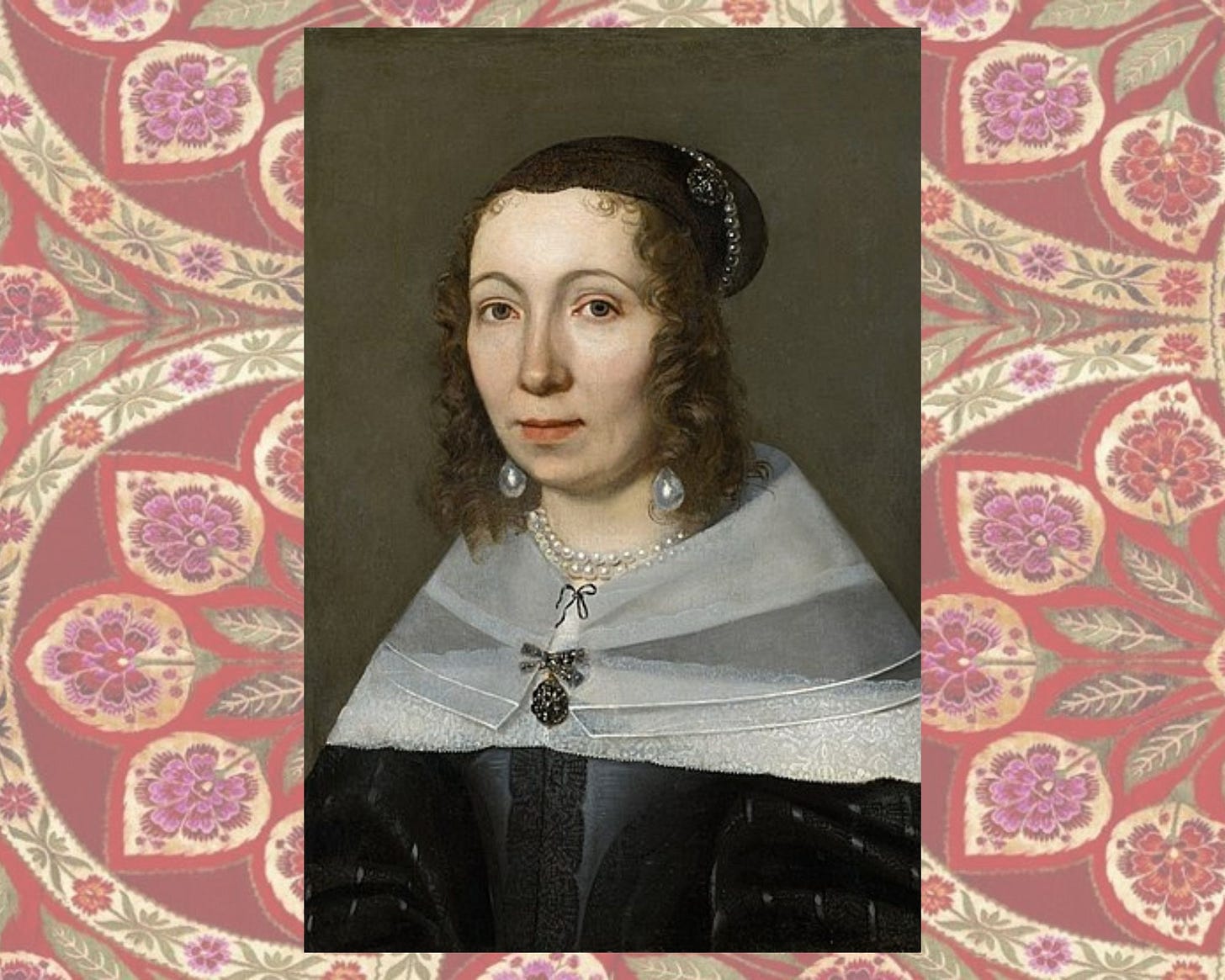What does the U.S. owe the Hawaiian people?
And support is needed for Accra’s Kantamanto Secondhand Clothing Market.
“The Intersection” is your Monday, Wednesday, and Friday briefing on global affairs, business, culture, and design—offering fresh insights through the lenses of sustainable development, women-centered perspectives, and emerging global trends. The aim? To keep you informed, curious, and always ready with a compelling conversation starter at the dinner table.
After a whirlwind holiday season that included a festive sojourn to Cleveland and a sun-drenched New Year’s escape to Puerto Vallarta, I’ve returned to Chicago, ready to dive into the rhythms of a fresh year.
Yesterday’s flight back offered the perfect opportunity to start I Love Russia: Reporting from a Lost Country by journalist Elena Kostyuchenko (translated from the Russian by Ilona Yazhbin Chavasse and Bela Shayevich). Kostyuchenko captures the lives of those systematically silenced and erased within her homeland through a poignant blend of reportage spanning fifteen years and personal essays. Her bravery is undeniable—publishing this book despite the very real risk of a 15-year prison sentence (or most likely worse) should she return to her homeland. Driven by the belief that true patriotism demands criticism, her work is as compelling as it is courageous. The few pieces I’ve read so far have been nothing short of extraordinary.
(And if you missed it, I shared my favourite reads of 2024 in yesterday's post!)

Yemeni engineer Harbia Al-Himiary has dedicated her career to preserving the heritage of Sana’a, Yemen’s capital, one of the world’s oldest continuously inhabited cities, while championing social progress. Guided by her vision to safeguard “the continuity of our history, one of the greatest civilizations,” Al-Himiary intertwines cultural conservation with gender equality, creating training opportunities for women and girls in traditional building crafts. In some trades, girls now outnumber boys—a reflection of her transformative approach to empowerment and preservation. However, her work faces constant challenges, underscored by this week’s U.S. strikes across Sana’a, a stark reminder of the fragility of this ancient city and its storied legacy.
On New Year’s Day, Accra’s Kantamanto Secondhand Clothing Market—the largest of its kind globally, recirculating millions of garments weekly—was devastated by a fire, reducing it to ashes. Thousands of businesses have been destroyed, daily livelihoods shattered, and millions of dollars’ worth of supplies and tools lost. Over 10,000 people in Ghana are now grappling with the aftermath of this disaster. The Or Foundation, a remarkable organization dedicated to sustainable fashion and community support, has pledged an initial $1 million in emergency relief funding and launched a fundraiser to aid rebuilding efforts. A thoughtful way to contribute? Redirect a portion of your shopping budget to support this vital market and the community that depends on it.
Over 115,000 Syrians have returned home since the end of the Assad dictatorship. In 2024, Syria had the highest number of displaced people globally, with 13.8 million people forcibly displaced in and outside its borders. While the future of Syria remains up in the air, this is promising news that people feel as though they are able to return and are willing to do so.
Speaking of migration, the Musée de l'Homme in Paris has a new exhibition that explores human migrations, past and present.
A Milwaukee-based fashion label is redefining comfort and sustainability with its stylish fleeces. All are crafted from organic or regenerative materials sourced within a fully domestic supply chain. Each product features a QR code that allows customers to trace its origins and production journey. The wool, sourced from Shaniko Wool’s regenerative ranches in the Pacific Northwest—also used by Ralph Lauren for Team USA’s Olympic opening ceremony uniforms—is cut and sewn in New York’s Garment District. Very, very cool.

In 1893, a U.S.-backed coup toppled Hawai‘i’s sovereign government, marking a turning point in American foreign policy. Before its overthrow, Hawai‘i was a thriving, independent nation with global diplomatic ties, a constitutional monarchy, elected representatives, a Supreme Court, and a declaration of rights inspired by the U.S. Bill of Rights. In fact, as locals often note, Iolani Palace boasted electric lights before the White House. This chapter in history is too often dismissed as a footnote, but it shouldn’t be. The overthrow of Hawai‘i set the stage for America’s rise as a global superpower. Without it, there might have been no Pearl Harbor, no decisive Allied victory in World War II, and no era of Pax Americana. With today’s shifting geopolitical tides and the return of Trump, this overlooked moment in U.S. history feels more relevant than ever. For a deeper dive, Adrienne LaFrance’s compelling long-form piece in The Atlantic explores Hawai‘i’s sovereignty, its layered history, and the ongoing debate over what the U.S. owes the Hawaiian people.
As the US Supreme Court begins its 2025 term, the docket is packed with cases poised to influence the country’s legal and cultural trajectory. Among the key issues is a controversial law barring healthcare providers from administering treatments—including puberty blockers or hormone therapy—to minors seeking to transition, raising questions about individual rights and medical ethics. Another case examines the scope of the Americans with Disabilities Act, specifically whether former employees can sue over post-employment benefits. The Court will also weigh in on the Biden administration’s regulatory efforts against ghost guns, a flashpoint in the ongoing debate over firearm control. And then there’s the much-anticipated TikTok case, which could redefine the intersection of technology, free speech, and national security. All eyes on the Supreme Court (as usual).
Vermiglio is a beautiful film (I saw it during the Chicago Film Festival) and is Italy’s Oscar submission this year. It is now playing in theatres!
With the economy showing encouraging signs of growth and inflation beginning to steady, the outlook for charitable giving appears optimistic. Historically, periods of economic expansion have often spurred increased philanthropic activity. Broader societal motivations are equally influential, as shifts in the political landscape frequently inspire both individuals and organizations to open their wallets with greater generosity. I’m curious to see whether these predictions hold true, and I would love to know how you view charitable giving in your personal budget.
Here’s a surprising fact: the U.S. government only began tracking the number of female-owned businesses after the Women’s Business Ownership Act was passed in 1988. Enter the Great Lakes Women’s Business Council, founded in the 1980s with a mission to empower female entrepreneurs. The council provides a suite of offerings, including small business loans, peer-mentoring programs, and executive education, all tailored to women in business. Since its inception, the organization has disbursed $8 million in loans, enabling the creation of approximately 1,800 jobs. Today, it represents over 1,400 WBENC-certified women’s business enterprises—companies that are at least 51% owned, operated, and managed by women. Together, these businesses generate an impressive $8.6 billion in annual revenue and employ 48,000 workers across the U.S. For more insights, read this compelling interview with the organization’s founder, Michelle Richards.
Afar's 2025 travel picks read like a curated dream list, filled with destinations that defy the ordinary. These are not your typical tourist haunts, but rather places rich with experiences, culture, and untold stories. Among the highlights are Belgrade, Serbia, where history and modernity converge; Columbus, Ohio, a hub of innovation and creativity; Benin, offering a deep dive into African heritage and spirit; the Danish Riviera, an understated escape with striking landscapes; and Toyama, Japan, a serene city where tradition meets natural beauty. Where are you planning on traveling this year?
Maria Sibylla Merian (1647-1717) was a pioneering German entomologist and naturalist, renowned for her meticulous documentation of insects and their life cycles. A trained botanical artist, Merian challenged prevailing misconceptions about insects—at the time believed to be "born of mud" through spontaneous generation—by providing early empirical evidence of metamorphosis. Her research, which spanned 186 insect species, began in her youth, when she raised silkworms and observed moths and butterflies. Later, in Nuremberg and Frankfurt, she ventured into the countryside to study caterpillars and their behaviors, creating intricate illustrations of her findings.
In 1699, Merian embarked on an extraordinary self-funded journey to Suriname, becoming the first European woman to independently conduct a scientific expedition in South America. There, she discovered a wealth of new species and documented the tropical insects that had eluded other naturalists. Her work caught the attention of Peter the Great, who acquired a collection of her paintings shortly before her death. Today, Merian’s detailed illustrations and groundbreaking studies are preserved in academic collections, a testament to her pioneering role in the natural sciences.
Hope you have a great weekend! Let me know what you are reading or thinking about in the comments.
Jennifer
xxx










